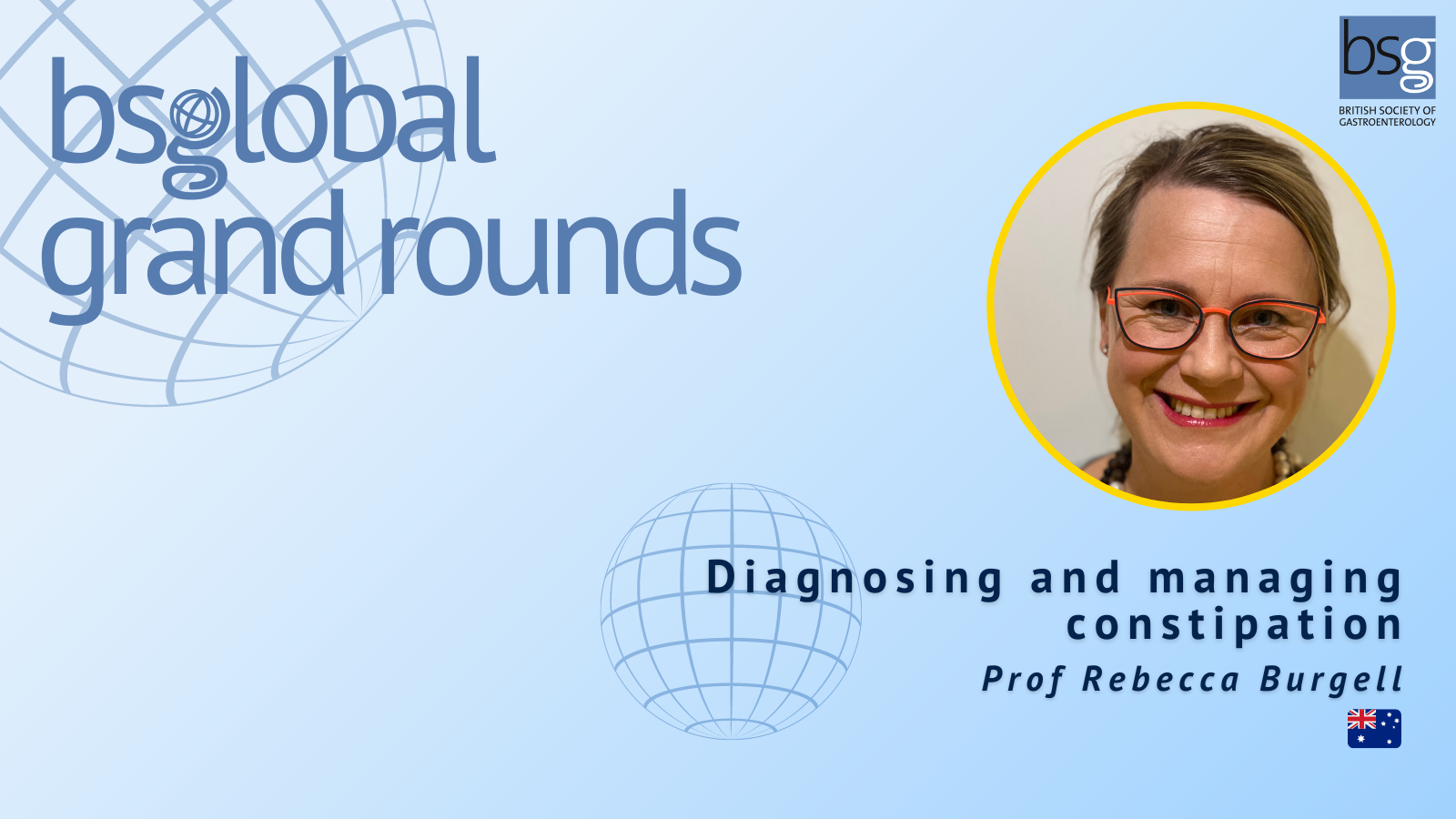BSG Global Grand Rounds webinar series
This webinar series aims to cover the SCE curriculum with speakers from across the globe giving us an international perspective on common gastro-intestinal conditions.
Free to watch, with no registration required and available on catch up below. Sign up using this form for email updates and be the first to know about new webinar releases.
Season 2
Updates in the management of Non Variceal Upper Gastrointestinal Bleeding
Learning points: Refer to guidelines which give guidance and form a checklist, assessment of what to do before, during and after endoscopic procedures for non variceal upper gastrointestinal bleeding, if nothing works post endoscopic treatment refer to interventional radiology therapy
.png)
Abnormal LFTs in Pregnancy
Learning points: More young people facing liver disorders and so more pregnant women show abnormal liver tests, in all cases we should rule out primary liver disease, economic crisis, migration phenomena, climate change, MASLD epidemic contributes to raise hepatic risk in pregnancy, liver tests but specially a complete history and a wise workup help us to achieve the correct diagnosis
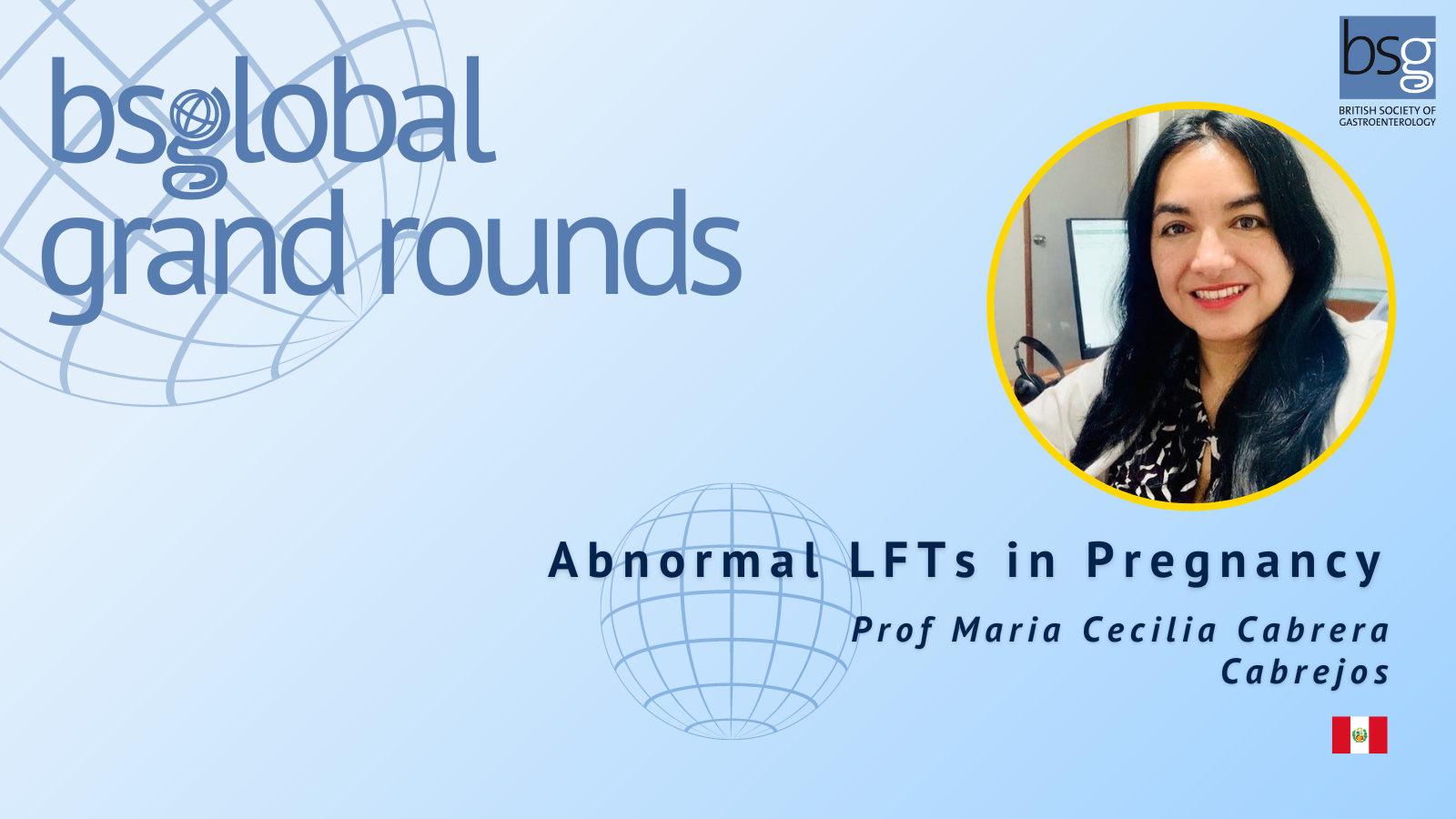
Endoscopic disease activity assessment in Ulcerative Colitis
Learning points: Therapies for UC may result in partial (patchy) but substantial healing over time, T2T principle should take that into consideration, it would be incorrect to classify patients with a partial but significant response as non-responders because if a less than optimal assessment tool, the adoption of a novel endoscopic score for assessment of disease severity and excellent following treatment is needed
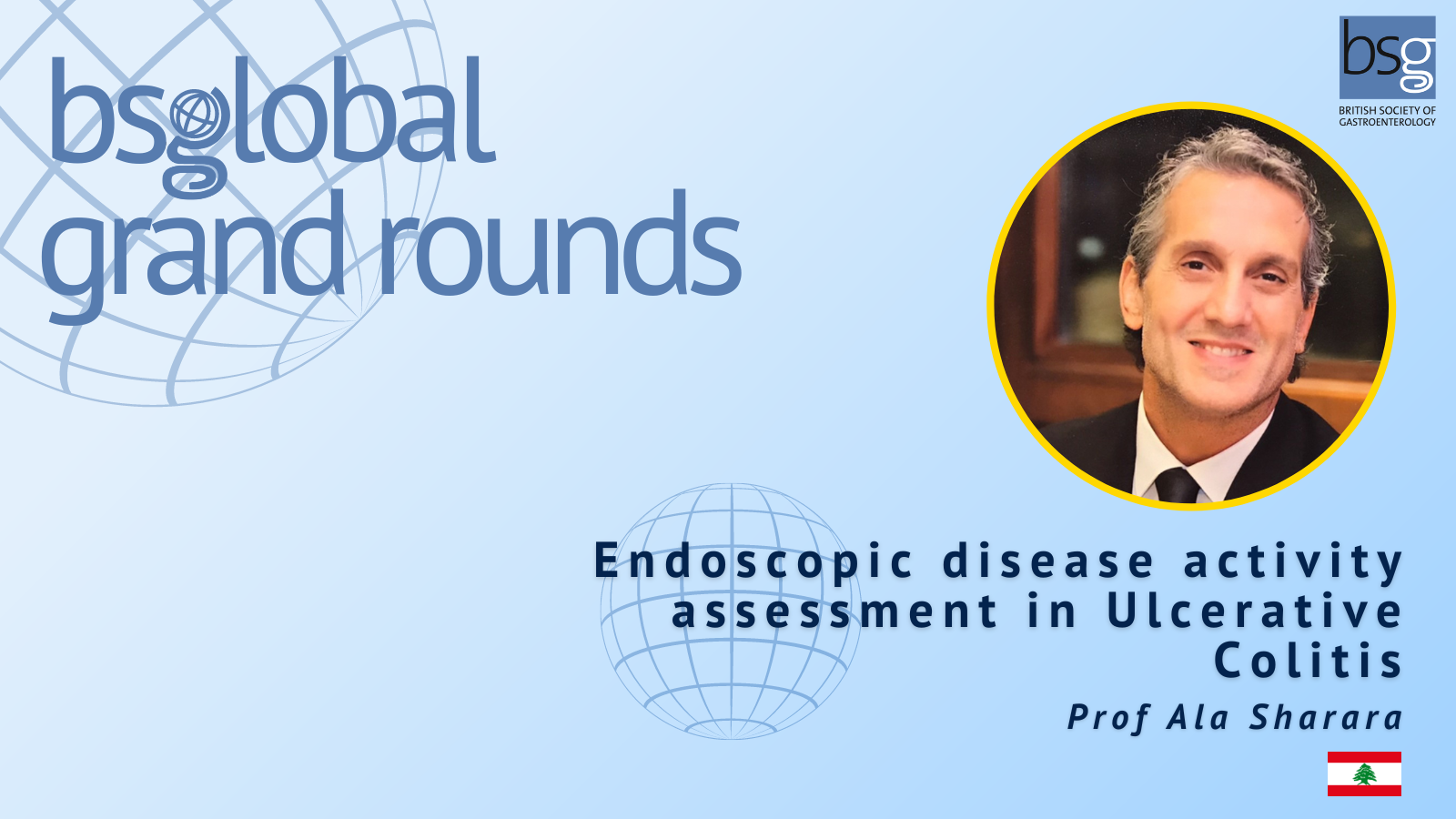
Oesophageal manometry: principles and interpretation
Learning points: HRM with oesophageal pressure topography is the gold standard to asses oesophageal motility, application of Chicago Classification (CC) to HR metrics provides a diagnosis of oesophageal motility disorders, HRM interpretation involved interaction with a software system to assess the baseline period for anatomical landmarks, pressure inversion point and EGJ morphology, and individual swallows for assessment of EGJ relaxation, contractile patterns and pressurisation, newer applications of HRM include provocative manoeuvres to improve diagnostic sensitivity, HRM interpreted together with clinical symptoms and adjunctive diagnostic tools (timed barium esophagogram/Endoflip): - assimilate HRM findings with patient’s symptoms, adjunctive complementary tests, adequate training and competency in HRM interpretation
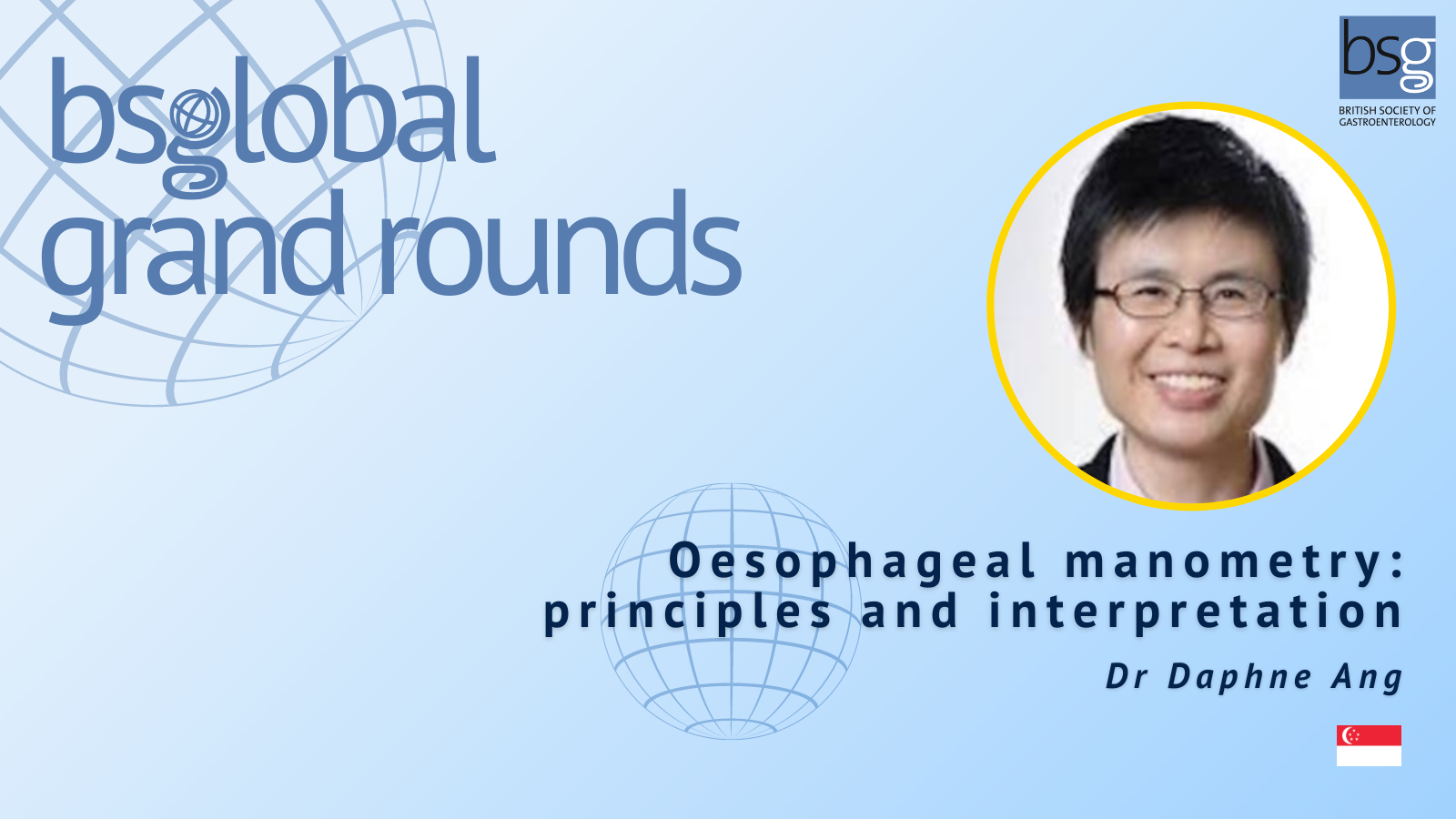
Endoscopy training
Learning points: Tele mentoring is an underutilised tool, has to overcome hurdles to disseminate the technique, can enhance the training of flexible endoscopy globally, for both diagnostic and advanced therapeutic procedures, can foster local talent particularly in resource limited settings, empower local and regional service development

The diagnosis and management of infective diarrhoea
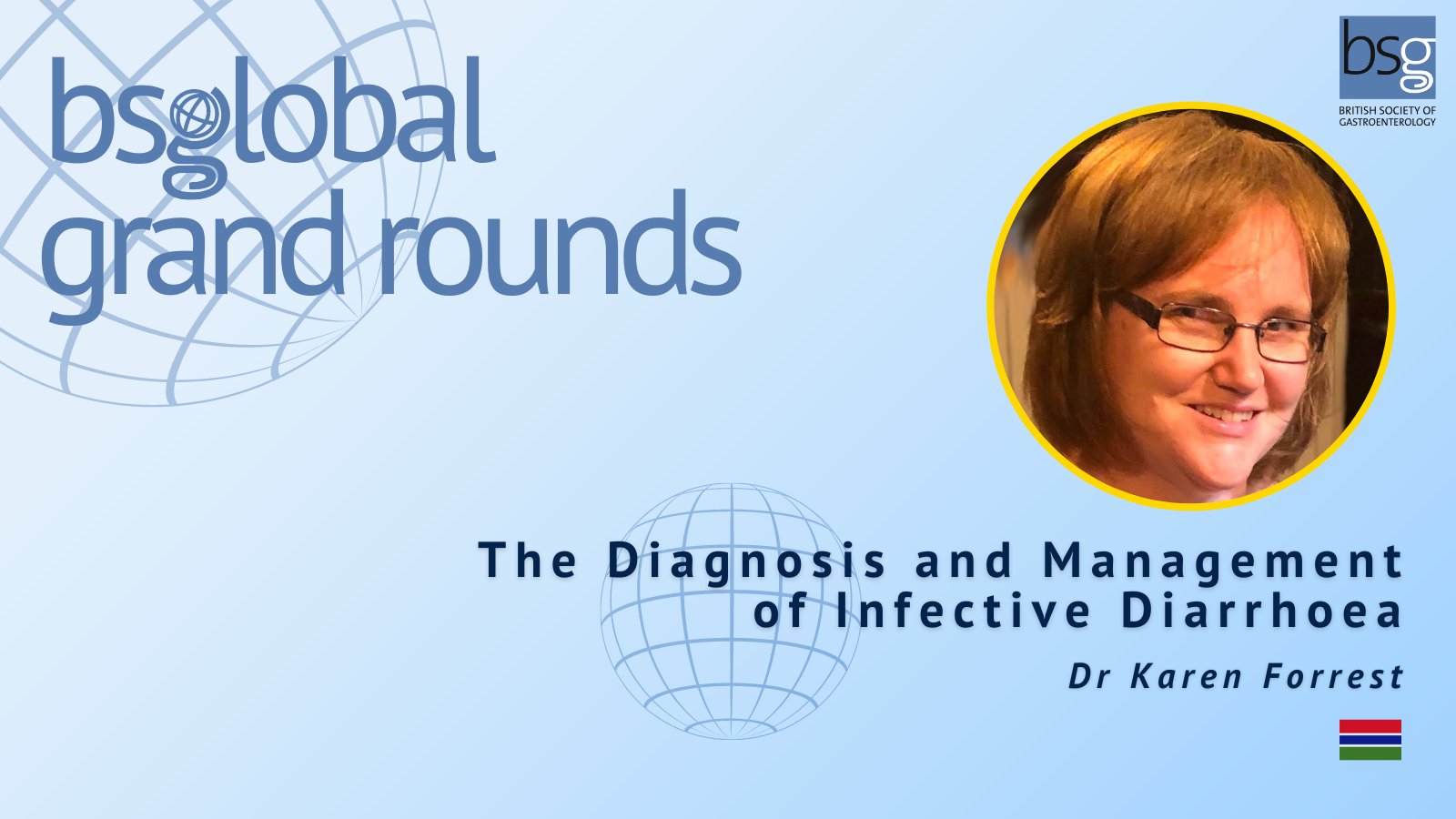
Updates in the management of alcoholic hepatitis
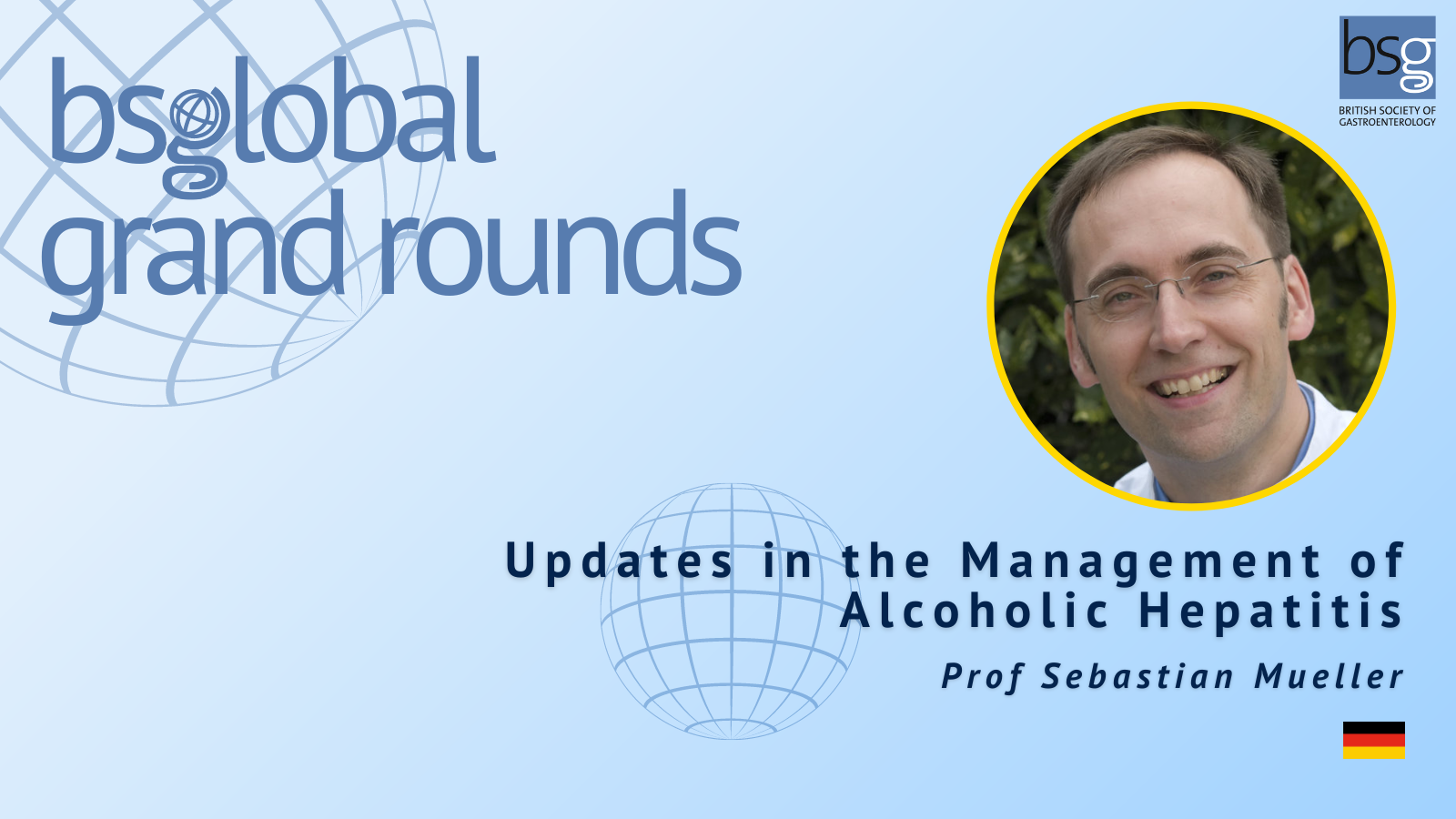
Season 1
Bile Salt Malabsorption
Learning points: Look for iatrogenic causes (Metformin), future role for non-invasive diagnostic markers, Bile Acid Malabsorption may co-exist with other GI conditions
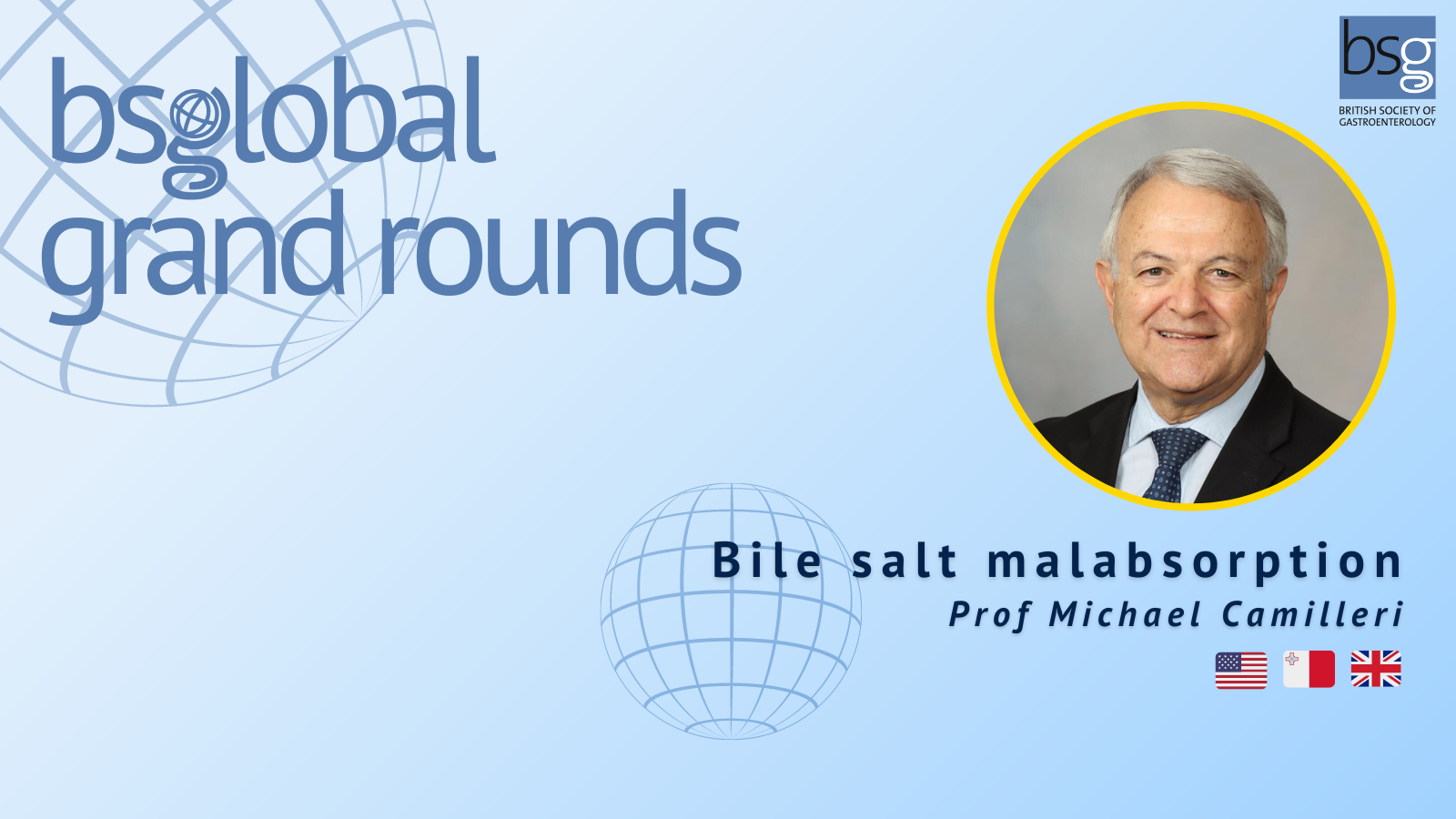
Endoscopic diagnosis of early upper gastrointestinal neoplasia
Learning points: All gastroscopies are an opportunity to look for pre-malignant/early malignant changes, biopsy any suspicious lesions
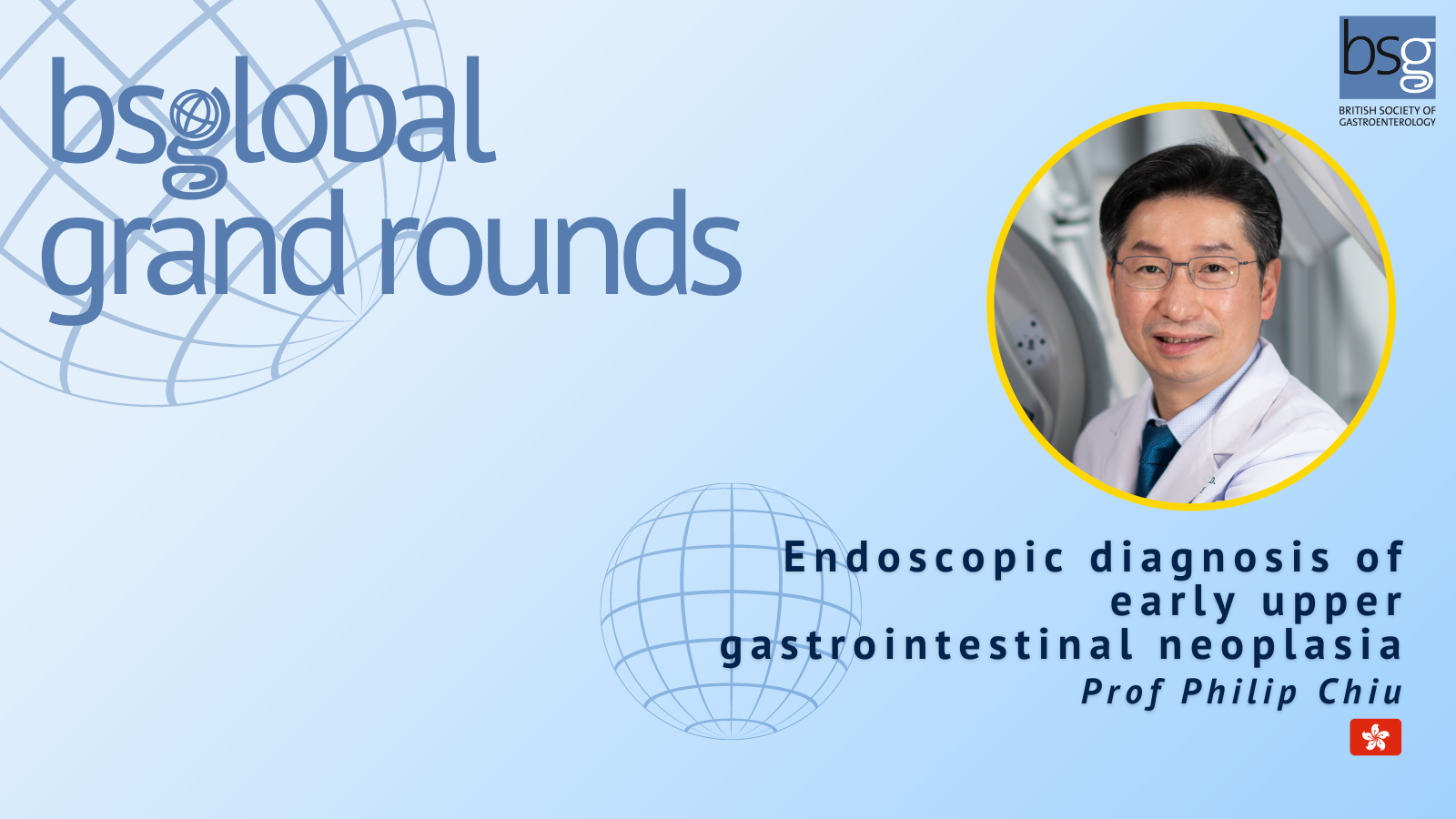
Non Alcoholic Fatty liver Disease: A practical approach to diagnosis and management
Learning points: NAFLD is the leading cause of liver disease and increasingly liver cancer, early identification of those at risk can prevent the progression to cirrhosis, lifestyle modification is the cornerstone of management
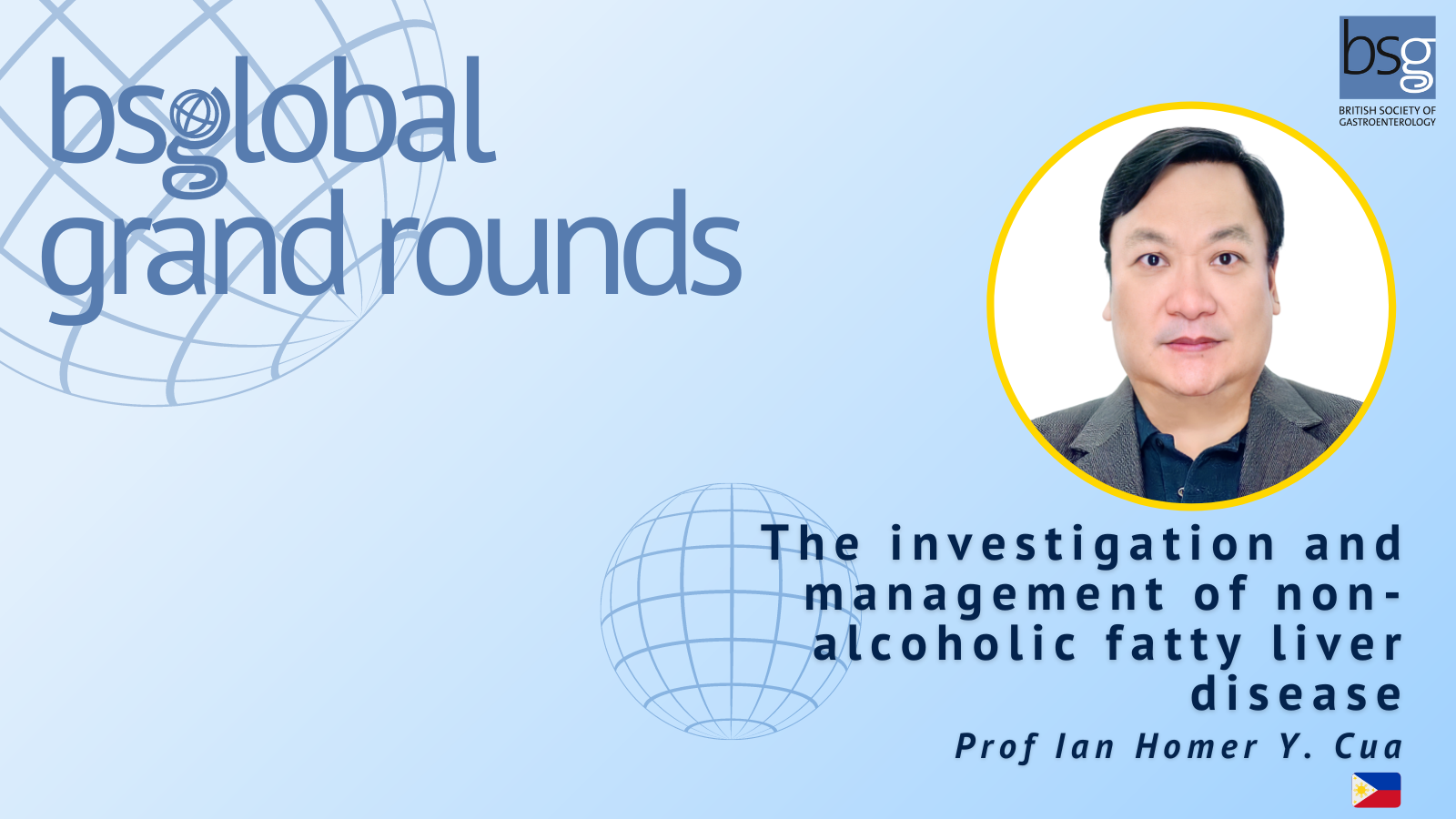
Reducing colorectal cancer risk in IBD
Learning points: Managing inflammation aggressively reduces colorectal cancer risk, surveillance is required, especially in high-risk groups, high quality histopathology services are required to support clinical decisions
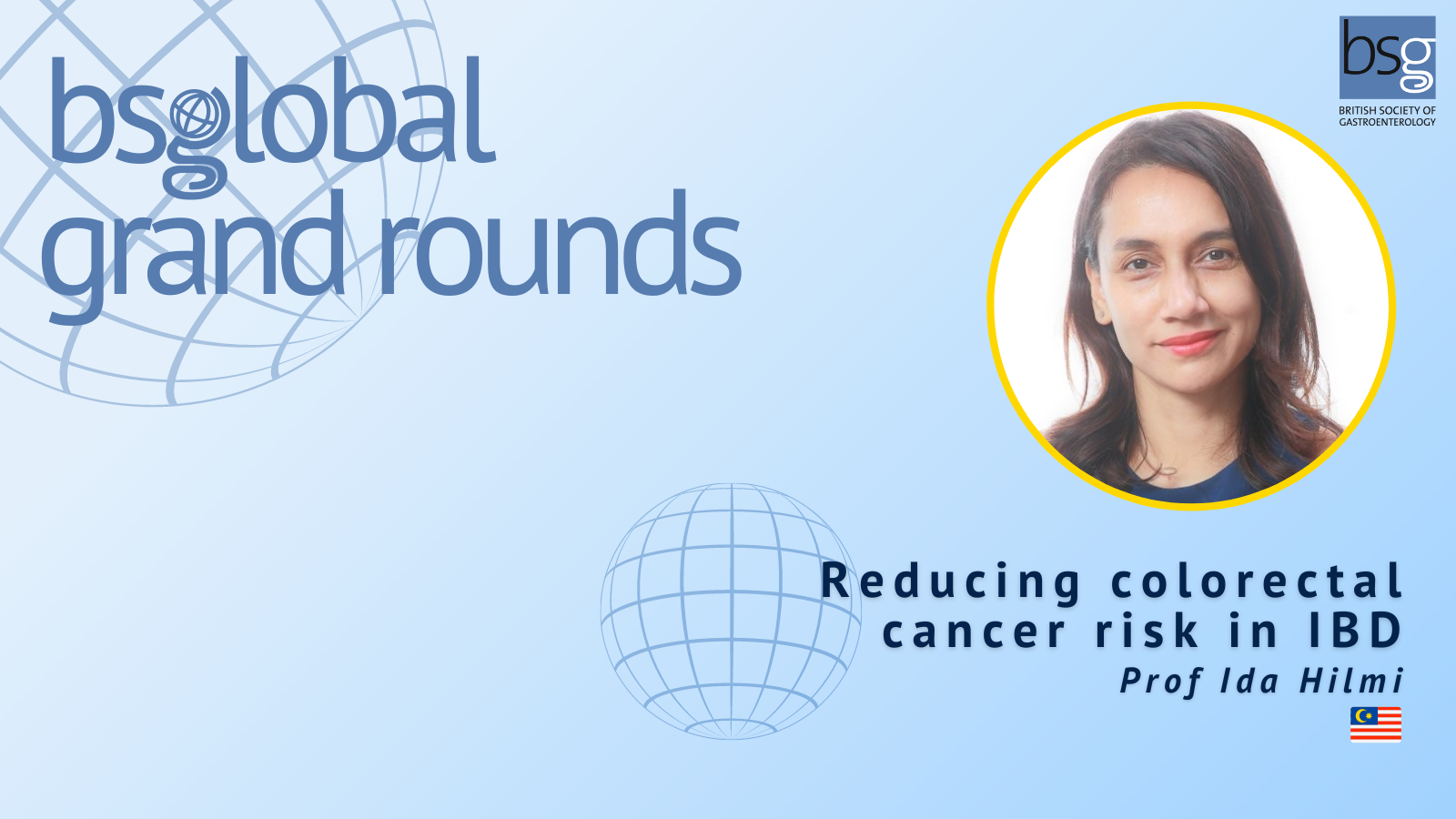
Updates in eosinophilic oesophagitis
Learning Points: PPIs help alleviate symptoms in up to half of all patients, Jorvesa and Dupilumab are effective medical therapies in the treatment of eosinophilic oesophagitis, monoclonal antibodies should be reserved for those who are refractory to standard therapy
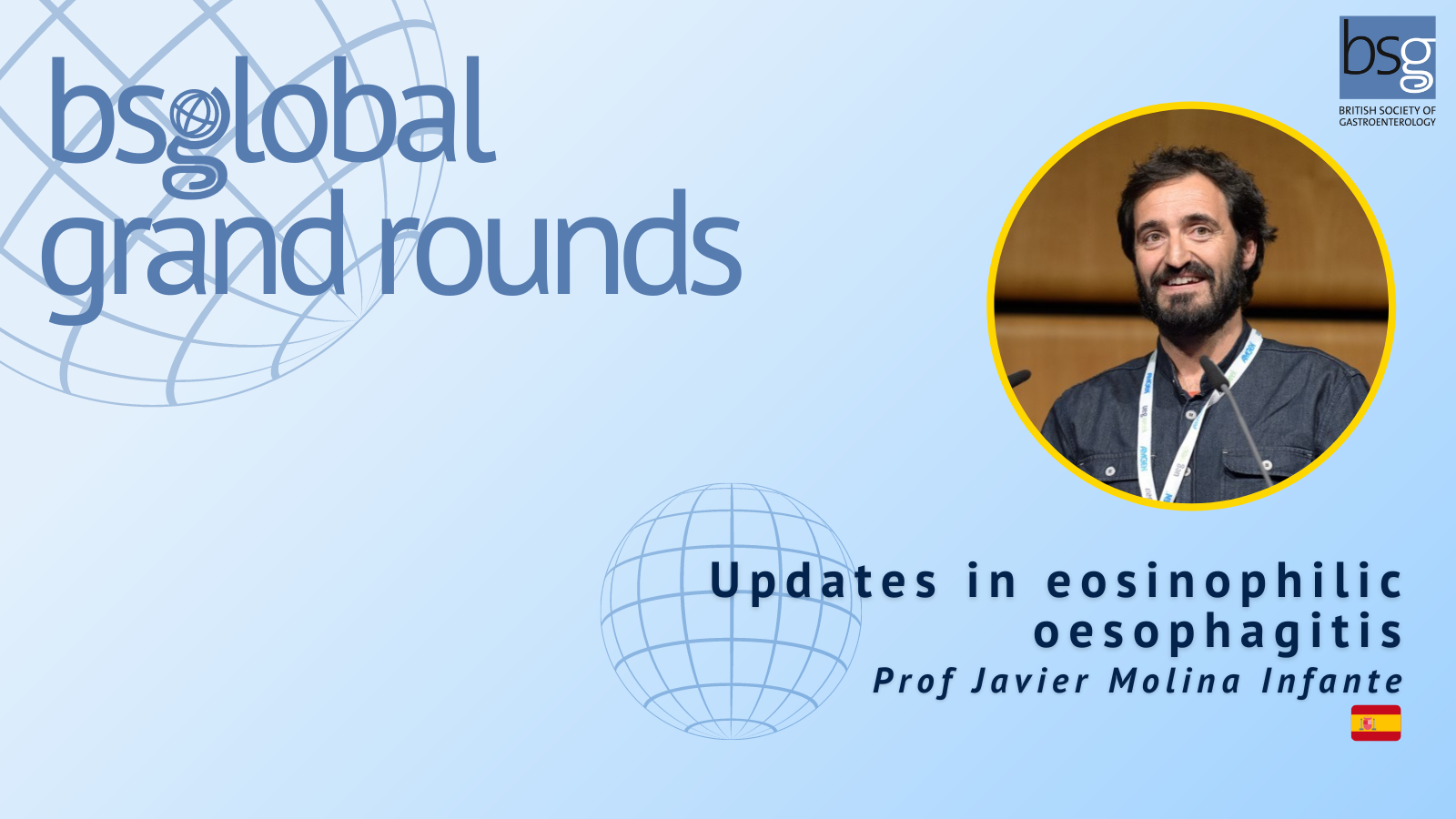
Colorectal cancer screening: an international perspective
Learning Points: FIT tests used to triage patients for colonoscopy screening, ensure that there is sufficient therapeutic skills to deal with pathology encountered, ensure there is a multi disciplinary team including histopathology, surgery, and oncology
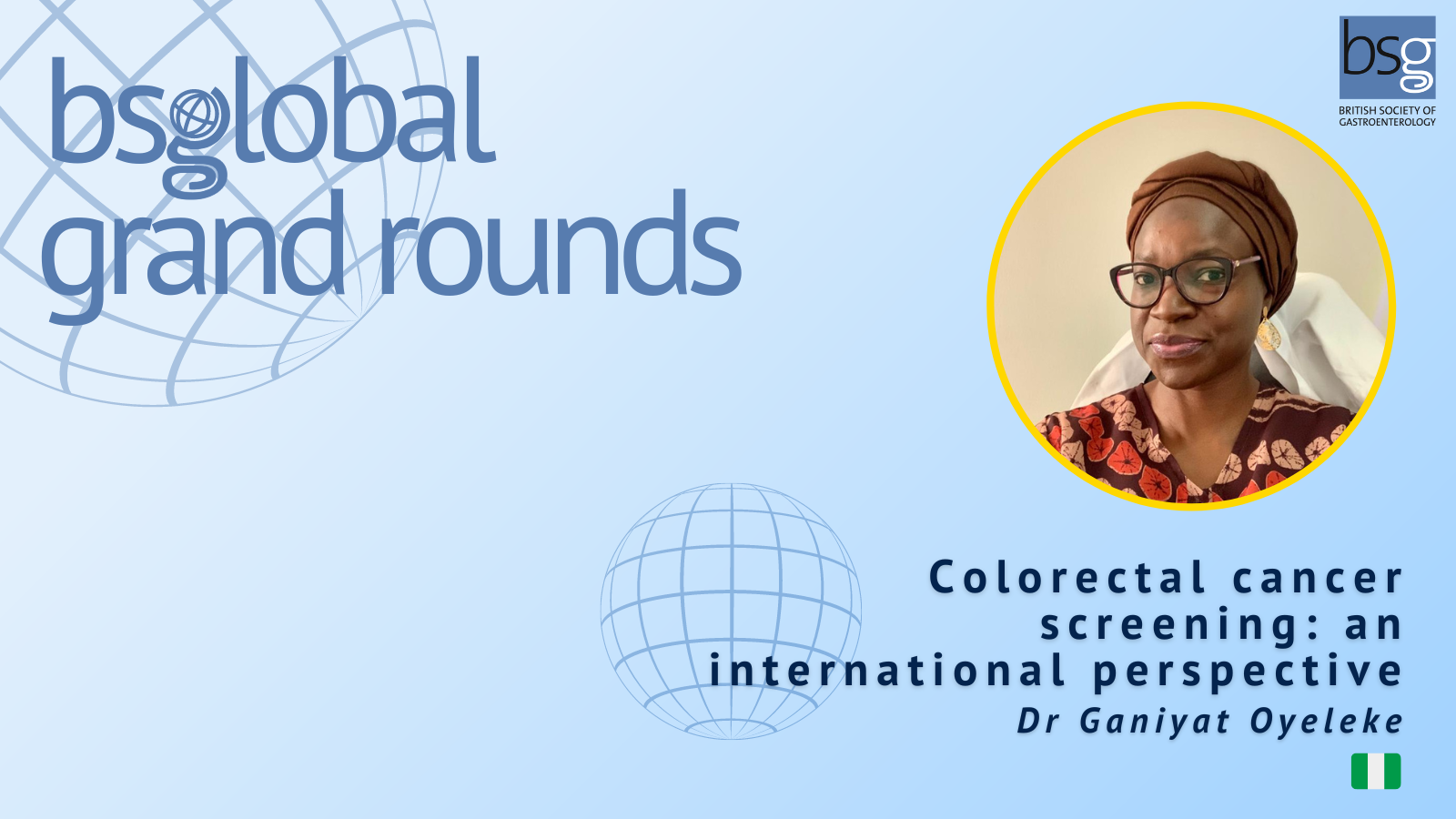
Pancreatic exocrine insufficiency
Learning Points: PEI is associated with malnutrition, quality of life and survival, the most appropriate diagnostic test depends on the clinical setting and availability of resources, educating patients on the use of PERT is essential

COVID-19 and its impact on the GI tract
Learning Points: COVID-19 can cause multiple GI symptoms, GI symptoms associated with COVID-19 can occur in the absence of respiratory symptoms, post COVID-19 functional disorders may emerge in the future

Diagnosing and managing constipation
Learning Points: Thorough history, including past therapies, examination, including a rectal examination, treatment targeted at the 'contents', 'container', or 'controller' Consider re-visiting and optimising previous strategies
